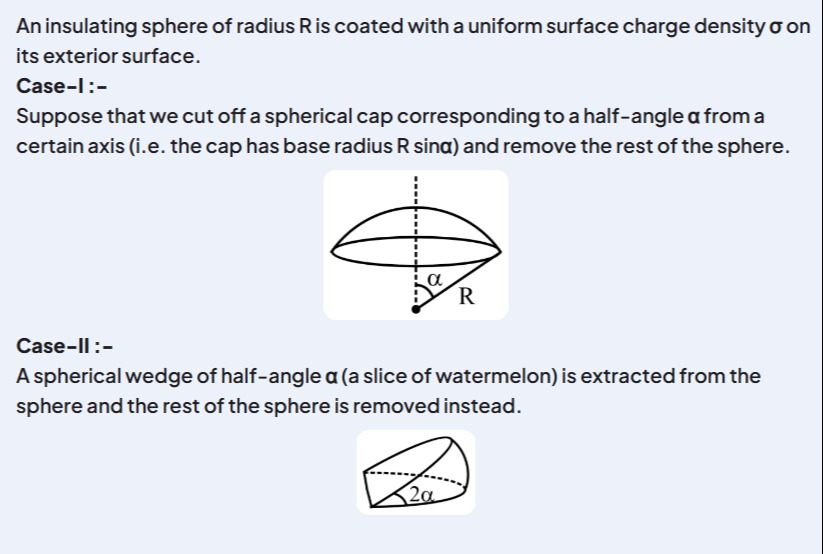Question
Question: An insulating sphere of radius R is coated with a uniform surface charge density $\sigma$ on its ext...
An insulating sphere of radius R is coated with a uniform surface charge density σ on its exterior surface.
Case-I :-
Suppose that we cut off a spherical cap corresponding to a half-angle α from a certain axis (i.e. the cap has base radius R sinα) and remove the rest of the sphere.
Case-II :-
A spherical wedge of half-angle α (a slice of watermelon) is extracted from the sphere and the rest of the sphere is removed instead.

Case I: Qcap=2πσR2(1−cosα) and
Ecap=4ϵ0σsin2αz^.
Case II: Qwedge=4ασR2 and
Ewedge=−4ϵ0σsinαx^.
Solution
• For the cap, use the area formula Acap=2πR2(1−cosα) to get the net charge. Then find the field at the centre by integrating the contribution
dEz=4πϵ0σsinθcosθdθdφ,
giving
Ez=4ϵ0σsin2α.
• For the wedge, note that its area is the fraction 2π2α of the total area so that Awedge=4αR2. Then, by symmetry, only the x–components add (with the z–components cancelling) and one obtains
Ex=−4ϵ0σsinα.
